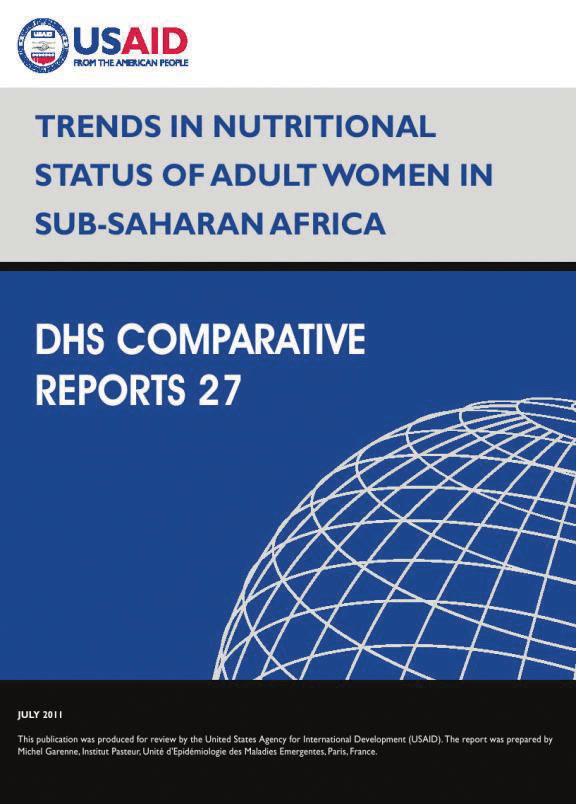
Abstract:
The study investigates long-term trends in
nutritional status (height and BMI) of
African women, using data from 70 DHS
Surveys. The average height of adult women
increased from 157.3 cm for cohorts born in
1940 to 158.7 cm for cohorts born in 1965,
then decreased to 157.5 cm for cohorts born
in 1990. Trends in women’s height were highly
correlated with the rise and fall in income
per capita at the time of adolescence for the
same cohorts. This pattern of a rise in
height followed by a fall was not universal.
In affluent countries of Southern Africa,
trends in height were only positive. In
Sahelian countries, there was no negative
trend in urban areas, and only the rural
areas underwent a minor decline. The largest
declines were in Coastal West Africa, Central
Africa, and most of Eastern Africa. Trends in
BMI were assessed using an age pattern for
women between age 15 and 49 years. In
countries of Southern Africa, the BMI was
much higher than elsewhere, was increasing
fast with age, and the age effect tended to
increase with time. In Sahelian countries,
the BMI was much lower but tended to catch up
with time. In countries of Coastal West
Africa, Central Africa, and Eastern Africa,
cohort trends were not linear: the age
standardized BMI tended to first increase,
then to decrease with time, and the negative
trends were larger in urban areas. Weight
gains with age were very small in most of
Eastern African countries.
 Trends in Nutritional Status of Adult Women in Sub-Saharan Africa (PDF, 1583K)
Trends in Nutritional Status of Adult Women in Sub-Saharan Africa (PDF, 1583K)
